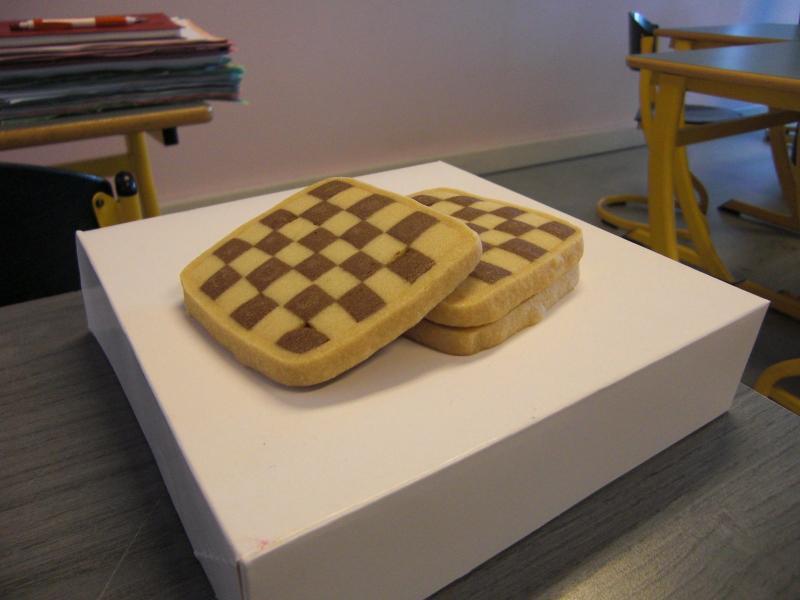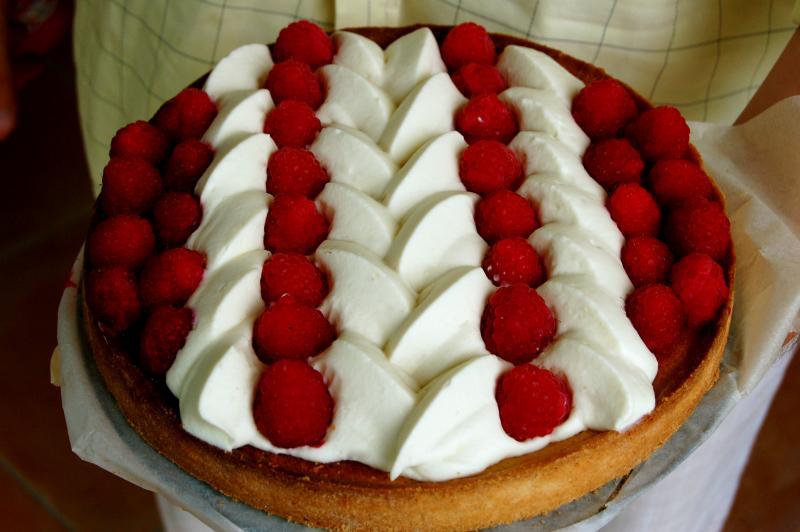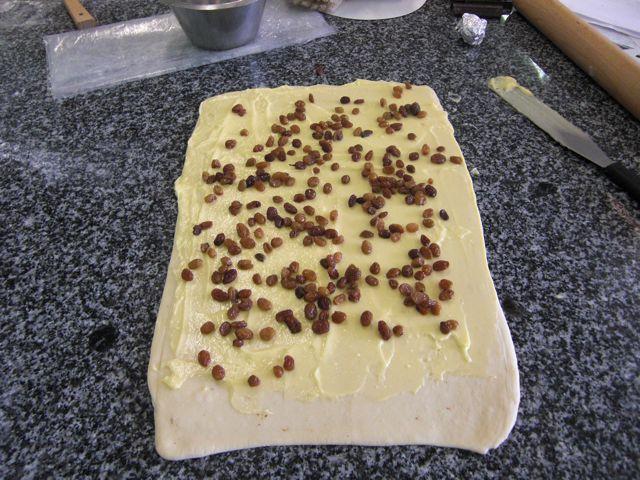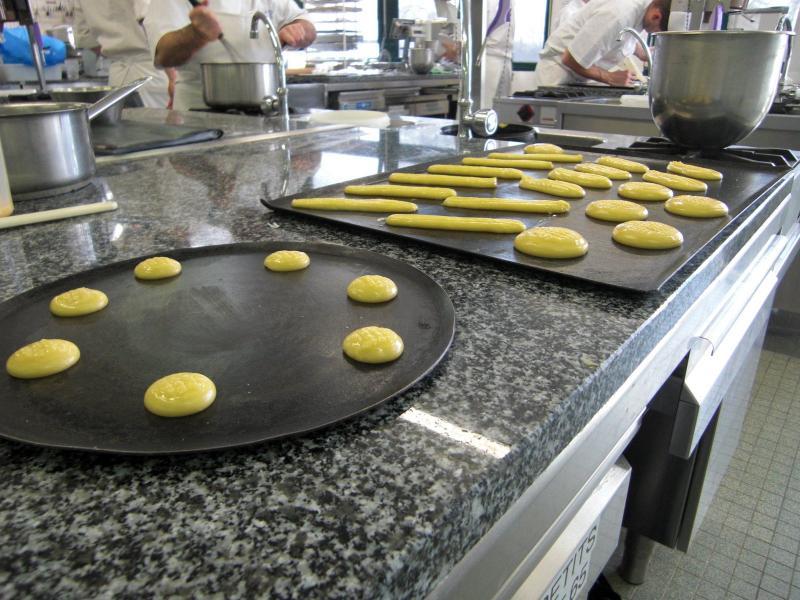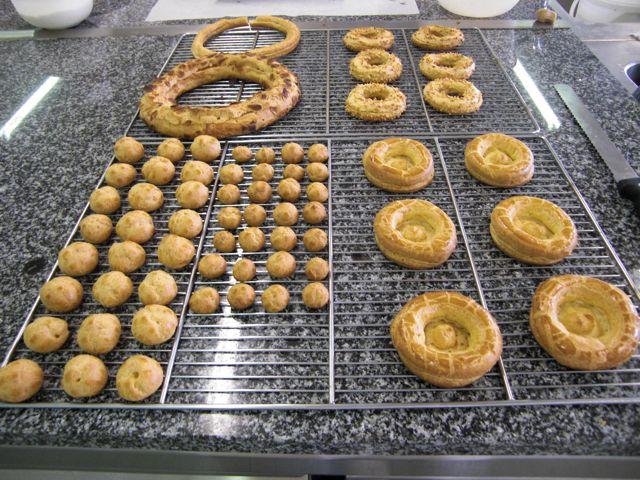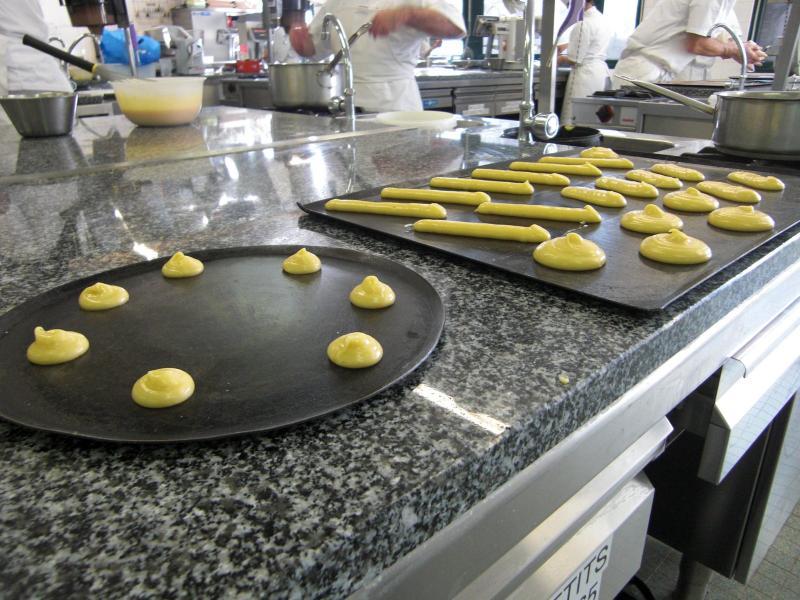-
Posts
139 -
Joined
-
Last visited
Content Type
Profiles
Forums
Store
Help Articles
Everything posted by RichardJones
-
Does this bake-off extend to more biscuity type sablés? I think these are great fun: Pâte sablée : Vanilla - 1500g flour - 1000g butter - 500g icing sugar - 5g salt - 60g egg white - Vanilla to taste Chocolate As above but with 100g cocoa powder instead of the vanilla.
-
Danny, I've now had a chance to look at your recipe. You don't mention what you're doing with the ingredients. But if you are making a meringue with the egg whites (firming with the sugar) and whipping the cream (which you can make as thick as you like) you ought not to be left with a mousse that runs as much as you say. Perhaps you need to be a bit more delicate when folding it all together? Having said that, gelatin will make it easier to demould anyway. I've just dug out this Pierre Hermé recipe for a raspberry mousse (if using strawberries, same plan, he suggests increasing the lemon juice to account for the lower acidity): ========== 350g raspberries 1 lemon juiced 4 leaves of gelatin (even PH does not let us know what bloom...) 120g italian meringue 160ml double cream (I think you say 'heavy cream' in Miami) 1. Press the fruit through a sieve and aim for 200g purée. 2. Soften the gelatin in cold water until soft then drain. Warm in the microwave until liquid. Add a quarter of the purée and stir well. Add this to the rest of the purée (via a sieve if you're fussy). 3. Whip the cream to soft peaks. 4. Add the lemon juice to the purée-gelatin mix, then fold in the Italian meringue, then fold in the cream. ========== If you do not know how to make an Italian meringue you should be able to pull this off with a French (standard) meringue but the uncooked eggs might scare the weak and infirm. Texture will be spot different. 40g egg whites (just over one, frustratingly, or find a very large egg), 80g sugar. Good luck! Richard
-
Here's the tart I made for my parent's 35th wedding anniversary. It's a sweet pastry crust filled with an almond paste made with crème fraîche. This was scattered with white chocolate chunks (Cacao Barry) and torn raspberries. Once that had baked and cooled I added the top which is raspberries alternating with a white chocolate mousse sitting on a thin layer of raspberry jam (which holds the fruit in place). The mousse is made with the same white chocolate, whipped cream and Italian meringue. It is piped with a St. Honoré piping tip.
-
Hi QbanCrackr, I can't offer much advice on the gelatin front -- especially since it depends on the bloom (i.e. strength) of the gelatin you are using which varies from manufacturer to manufacturer. Normally the pack will give some indication of what volume of liquid the gelatin will set and you can work with some experimentation from there. But I have got some thoughts on demoulding. Parchment paper will work to a certain extent. I think the cleanest result if using a circular mould is obtained by lining the mould with acetate tape (leave a little overlap) like this. No need to fix it in place -- physics should do that. If you are using silicon moulds, no need to line them at all. But it will hope if the mousse is very cold (heading for frozen if it is light) to get the buggers out. You might like to try popping the mould in a bath of warm water to ease exit. With a metal mould, you can heat gently with a blowtorch to the same effect. I hope this helps! Richard
-
Might addition of an inverted sugar slow down this crystallization?
-
What fast responses! Thanks to you both.
-
Oh dear, I seem to have found an answer to my own question. There are 1kg blocks available here: http://www.chocolatetradingco.com/moreinfo.asp?ID=899 and 3kg bags here: http://www.chocolatetradingco.com/moreinfo.asp?ID=928 However, if anyone can link to a higher cocoa content/better price, I'd still be grateful!
-
Dear Bakers, I would like to try and get my hands on some Valrhona couverture (nothing specific -- anything dark, suitable for moulding). This is tricky to do as an individual. I was wondering if there were any retailers offering Valrhona couverture you might have come across, please? On a similar note, is anyone aware of a supplier for very finely ground almonds (destined for macarons), please? Many thanks for any help you might be able to offer, R
-
This is a fun topic. It's also quite eye-opening to see how foreign words get subsumed and morphed and anglicized, americanized and so on. While some of the pronunciations given seem to be what one hears most often from American speakers, they also vary wildly from the French. For those that are interested, I'll have a go at International Phonetic Alphabet (IPA) transcriptions of most of the French words discussed as pronounced in 'standard French'. Although not perfect, the IPA is useful since it is a common point of reference... a personal transcription (such as 'Creh-pe') will be pronounced in a host of different ways depending on where you're from. [NB In case my IPA font does not work online see bottom of post for a screenshot of the next section.] Tuile [tɥil] Genoise [ʒenwaz] Bavaroise [bavaʁwaz] Cannelle (cinnamon) [kanɛl] Cannelé (batter-based nibble) [kanle] Dacquoise [dakwaz] Dragees [dʁaʒe] Pithiviers [pitivje] Frangipane [fʁɑ̃nʒipan] Macaron [makaʁɔ̃] Millefeuille [milfœj] Non pareil [nɔ̃paʁɛj] If you are not familiar with the IPA have a look here where there is a clickable chart. A few quick pointers are that in an IPA transcription every element is pronounced. The consonants are largely similar to their 'neutral' forms in English, with the ʒ symbol representing the soft sound of 'g' in 'genre'. The vowels are trickier and I would refer you to the site above for more information if you care about precision. It might be worth pointing out there is a difference between e and ɛ and between a and ɑ. The little squiggle ̃ means the vowel is nasalized. I hope this is of some interest, if only minority. R Screenshot of the above:
-
The standard French way to make a pain aux raisins is with a classic pâte levée feueilletée (croissant dough) but as mentioned there are some lovely variations with brioche. Then you just need bog standard crème pâtissière and raisins. Here is a snap taken before rolling: (Photo taken from a post on pains aux raisins here on my old blog.) I haven not made these since I was at school but a few tips I can remember: - Don't roll the sausage too tightly. This would prevent the yeast from rising as wanted. - Make sure the sausage is well chilled before slicing to avoid sealing the leaves of pastry. - Try macerating the raisins before use. Rum, tea or similar. - You can see in the photo the bottom inch or so has not been spread with cream. This is to help seal the sausage. The sausage is rolled from the furthest point towards the body so this uncreamed patch of pastry is what will make the joint. - You can seal by dampening this uncreamed margin. Another way is to flatten this section with a small palette knife, working it into the work surface. The fat which emerges helps fix the seal. - When chilling the sausage before slicing, ensure the seam is lowermost. This helps reinforce the joint. I hope that might be of use to somebody. R
-
I think the most important thing I learnt about choux pastry is that since it puffs mostly in a vertical direction you need to pipe really quite flat shapes. And then flatten them further when glazing. A really spherical choux bun comes out of raw pastry that looks like a flat pebble. The very flat looking objects in this photo turn out like this: I did a little post on piping choux here. I think glazing is really important to even up any irregularities for regular cooking. As for the nitty gritty technique of piping, the nasty bit is getting the nozzle away cleanly. This is a really tricky technique which cannot easily be described in words. When I was at pastry school we practised piping choux pastry more than anything else because it's a really knack that only comes with hands on experience. And when we weren't working with real pastry there was a large tub of margarine which we used to practise piping eclairs, salambos, choux and so on. Piping margarine is rather similar to choux pastry but rank and greasy and one of the most unpleasant things imaginable. The most important thing I can think of to say, since it is somewhat counter intuitive, is to keep the nozzle just IN the pastry that has just been piped. To remove the nozzle cleanly you want to give a little kick away from you. Because the nozzle is still in contact with the piped pastry it cuts cleanly across. Hopefully you can see the eclairs in this photo (which I must admit is not the finest demonstration of piping). The photo is the same as the one above but before glazing. The eclair nearest the camera shows the angle at which the nozzle was kicked back along the length of the eclair to get a clean finish. Another important point for decent piping is how viscous your pastry is. I prefer quite a pastry on the runnier side which makes it much easier to terminate piping. I hope that might help a little.
-
There are some photos on my old blog here of making a St. Honoré: http://candidcake.blogspot.com/2009/04/st-honores-paris-brests-and-bell.html. Pastry When I trained in France we always used puff pastry for the base. This was always heavily pricked to prevent it rising. In fact, we often used puff pastry off-cuts since they gave a similar texture and no rise was needed. Rather than balling the off-cuts like with sweet pastry, layer them up and then roll straight out. Cream We used various combinations of cream... as mentioned the classic is crème Chiboust which is a mixture of crème pâtissière and Italian meringue. The creation of the St. Ho. is attributed to Chiboust who had a pâtisserie in Rue St. Honoré in Paris. St. Honoré is also, I think, the patron saint of bakers. In the photos above we used an initial layer of straight crème pâtissière with the decorative piping done with Chantilly. Chantilly (attributed to Vatel?) In France, Chantilly refers to sweetened whipped cream that may be flavoured (most often with vanilla but even with chocolate). Piping Someone mentioned the St. Honoré piping tip. It looks like this: In the bottom photo on the linked page above, the centre line is done with this kind of tip if you want to see what it produces.
-
I am looking to do my foundation patisserie training in France next year. I am currently a keen amateur chef able to make basic pastry types but with no professional experience. A course I came across was the 5 month formation offered by the Institut National de Boulangerie Patisserie in Rouen (http://www.inbp.fr/). Has anyone had any experience of this institution? It is so hard to judge cookery schools when they all have shiny websites -- any anyone can call themselves a national institute. I would be very grateful for any feedback or advice you can offer. Also, I would love to consider any other recommendations people have. Many thanks for your help, Richard



